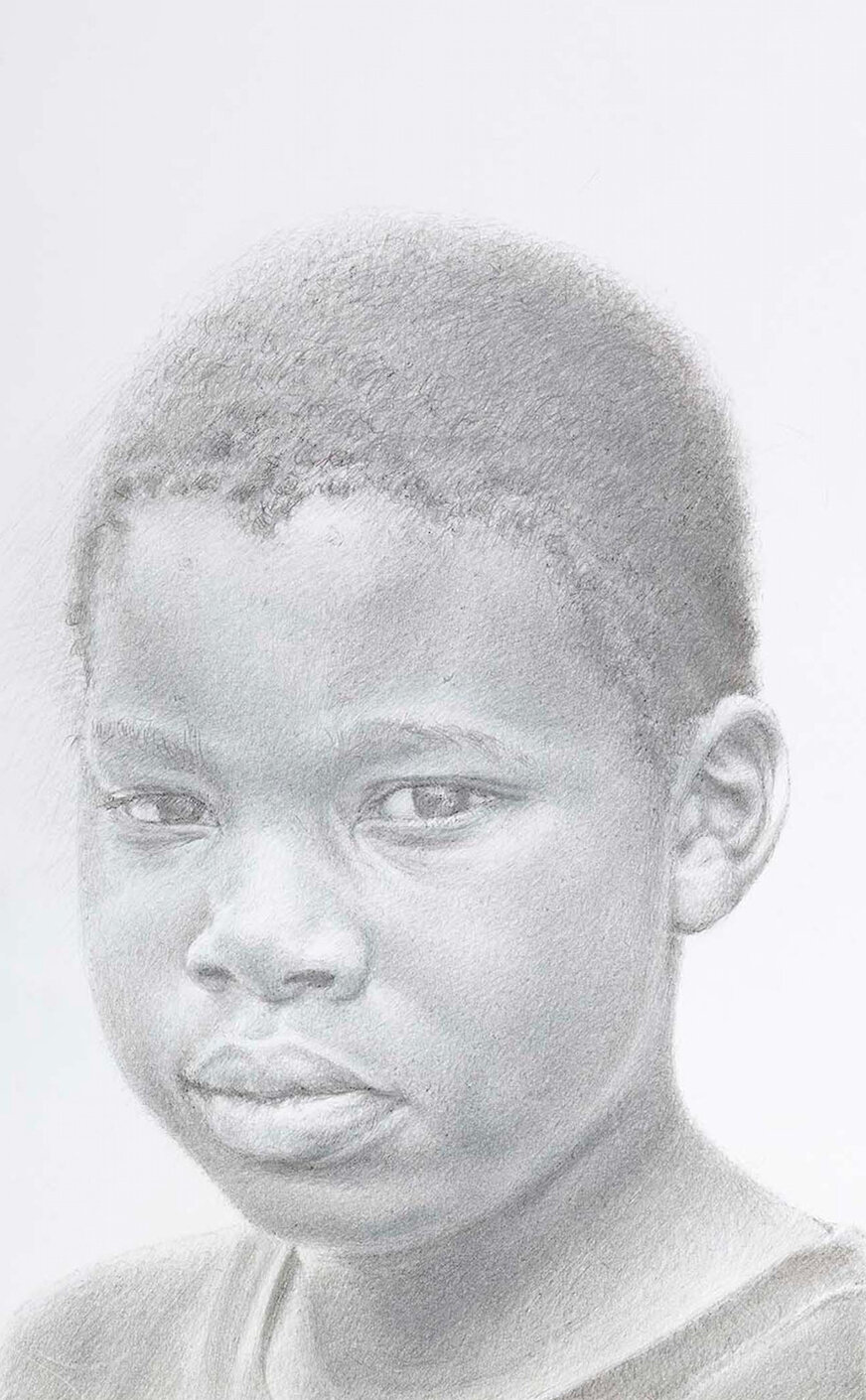Interview with artist Aj Smith
Aj Smith is a master of the graphite pencil – and much more. He earned a Bachelor of Fine Arts in painting and printmaking from the Kansas City Art Institute, a Master of Fine Arts from Queens College in New York, and completed a Master Printer Apprentice in Printmaking with Robert Blackburn in New York. For over 40 years he has taught drawing and painting, initially in New York and Massachusetts then at the University of Arkansas at Little Rock by way of the Printmaking Artist-In-Residence program at the Arkansas Arts Center. Aj’s ability to capture the essence of a person in shades of gray is remarkable. This is why he is a part of so many private, public and corporate collections. Aj’s work can be viewed at his website, ajsmithart.com.
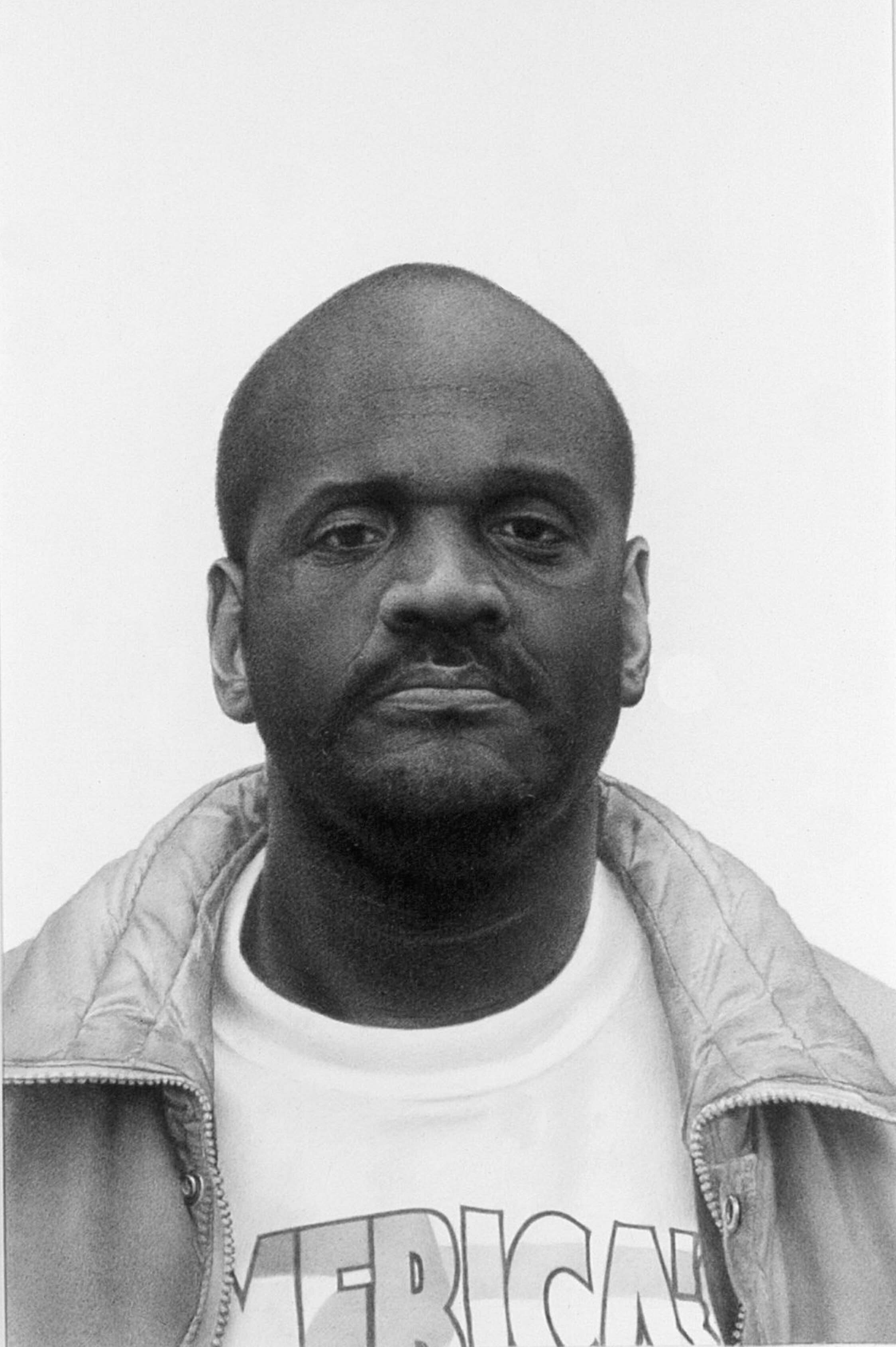

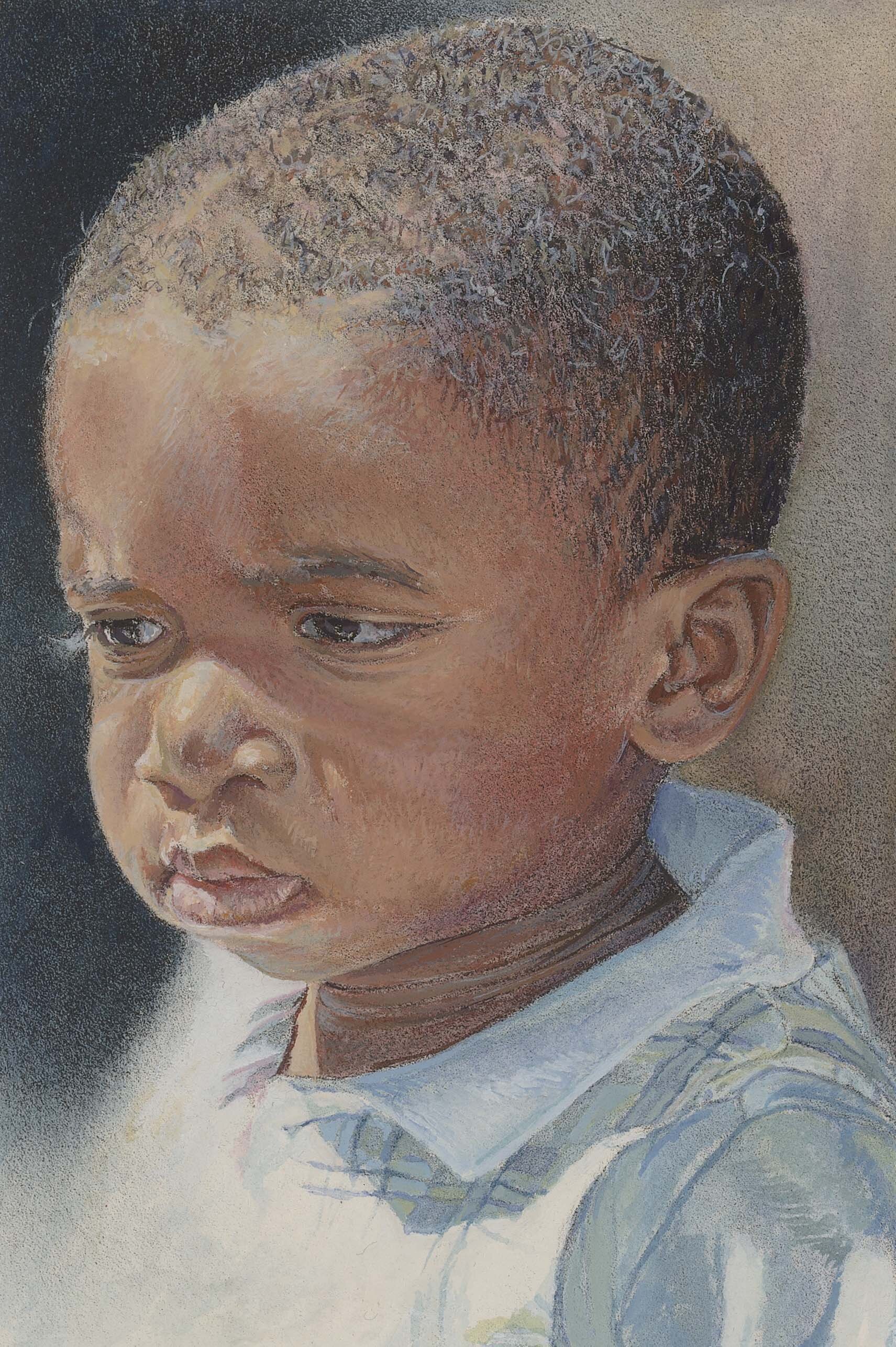
AAS: You recently retired from the Department of Art and Design at the University of Arkansas at Little Rock after nearly 40 years. What brought you to Little Rock and UALR?
AjS: During the summer of 1982, while living in New York with a studio in Long Island City, just across the East River from Midtown Manhattan, I had an eight-week contract teaching painting and drawing in Lenox, Massachusetts. The Administrative Assistant walked across the campus to my studio to tell me that I had a phone call from Little Rock, Arkansas. I had no known contacts in Little Rock, but took the call anyway – it was the Arkansas Arts Center calling to invite me to accept a position as Printmaking Artist-In-Residence. Once I was finally able to convince my wife, Marjorie, a visual artist and graphic designer, to take time-off from the rapid pace of New York City’s advertising production rat-race, we decided to try Arkansas, perhaps for one year. When we arrived, UALR asked if I would be interested in an adjunct position teaching drawing classes and to set-up a printmaking program for the Art Department. All university printmaking classes were to be taught at the Arts Center.
AAS: What did you enjoy most about teaching at UALR?
AjS: I see teaching as a means to share with students what was given to me as a young hopeful artist. It was Benny Andrews, internationally recognized artist and Chairman of the National Endowment for the Arts, who in 1982 recommended to Townsend Wolfe, Executive Director and Chief Curator, that I be considered for the Artist-In-Residence position at the Arkansas Arts Center. I view teaching as a vehicle to share with students what I have learned from much more experienced artists. I still keep-in-touch with some of those artists, now represented in major museums, international art collections, textbooks, and a variety of art publications. Many of my former students are now practicing professionals, some in the visual arts, others in careers related to the arts, and those who have chosen different professions altogether. My students continue to reach out and stay connected with me, as I continue to do with my mentors, including my high school art teacher.
Eddie, graphite pencil on archival paper, 36” x 24”
AAS: You and Marjorie just had an exhibition, A Path Forward, at the Arkansas Governor’s Mansion, which can be viewed on line. It was a wonderful retrospective. Have the two of you done many shows together?
AjS: We have had separate exhibitions where different messages were seen in our artworks. Separate exhibitions help to elucidate different messages that we want the viewer to gain. We have also presented some of the same work together locally, regionally, and nationally. Often when we show together, it is the viewer’s comparison between our images that allows them to see to what degree we are different, or are addressing the same concerns. Joint exhibitions include Truth and Illusions: The Arts & Science Center for Southeast Arkansas in Pine Bluff, Arkansas, Family Ties: Longview Art Museum in Longview, Texas, Two Artists / Two Visions: Evansville Museum of Arts, History, and Science in Evansville, Indiana and we have been included in the same Delta Exhibition at the Arkansas Arts Center here in Little Rock.
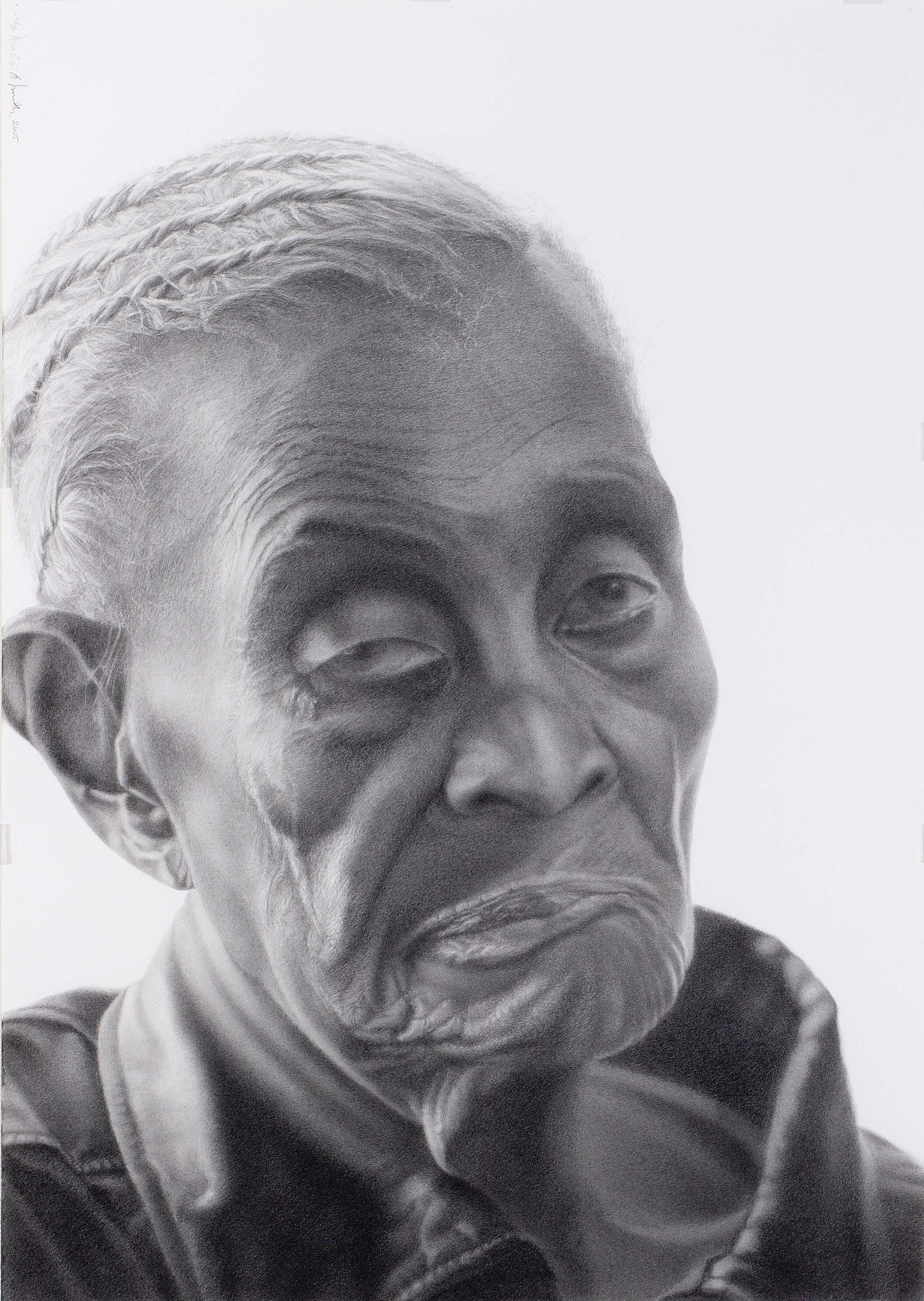
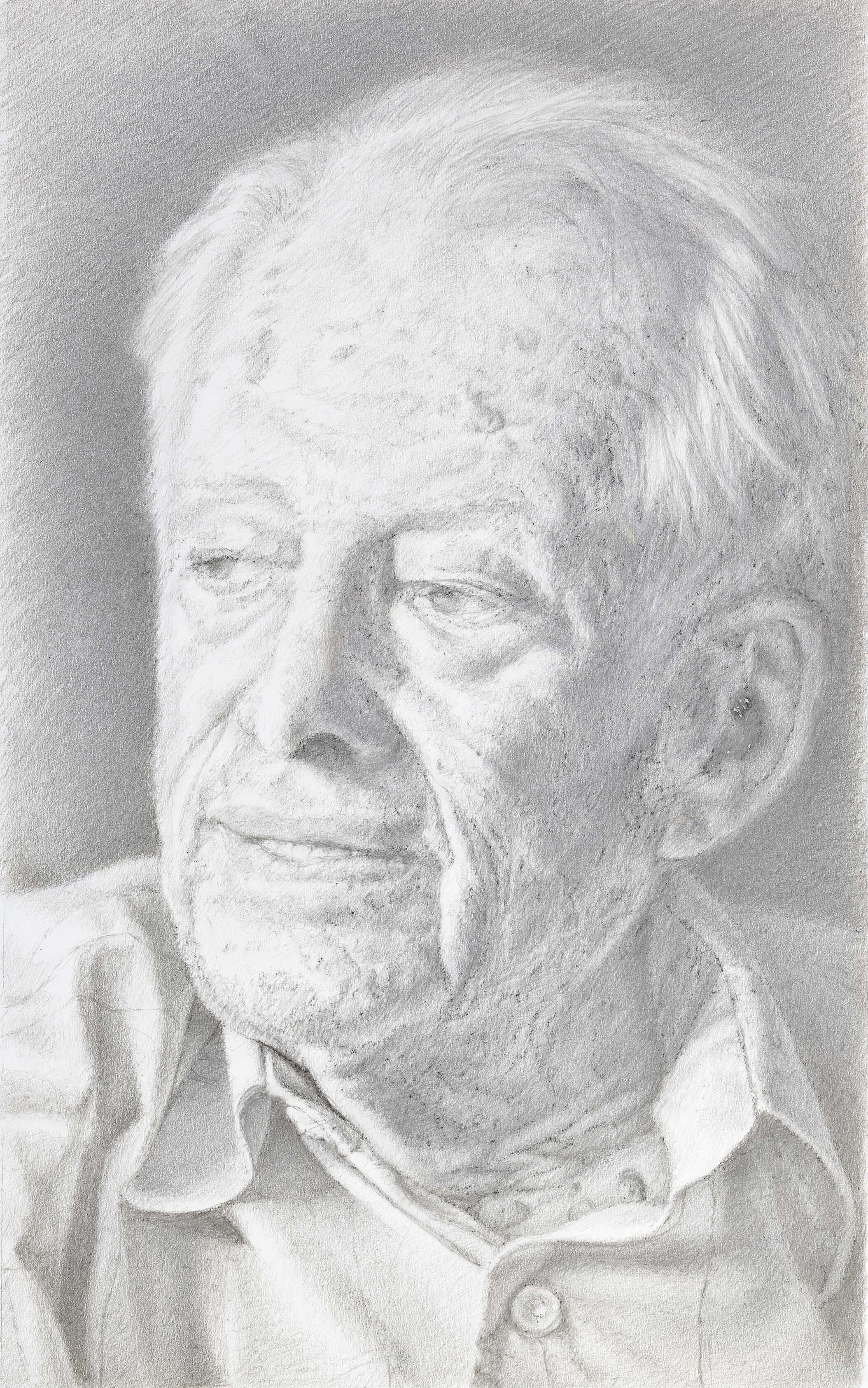
Trinity, graphite pencil on archival paper, 46” x 36”
AAS: Your drawings are recognizable for their incredible detail and meticulous shading. Are you that detailed and meticulous with everything in your daily life?
AjS: Thank you very much for your generous praise and comments on my drawings. I haven’t really thought about to what degree detail is used when applying tone to my drawings. But I appreciate an opportunity to elaborate on what I hope to show in my work. In my portraits, I would like for the drawings to reveal, somewhat, the life experiences of my subjects, whatever that experience and personal history might have been. I look for lighting that brings out the facial character that, I feel, best opens a window into that life history – I hope to show who that person really is and what their past has been. In drawings of children I want to show a youthful innocence – the face of older subjects has more to tell about the life they lived. As with everything else in my daily life, I feel it is extremely essential to be as clear as possible when communicating with others. Art to me is a form of visual communication, often more truthful and genuinely honest than in the words we sometime use.
AAS: What is it about the face that inspires you?
AjS: As mentioned earlier, it is the face that brings us together – a means to share life experiences. It is the face we meet that allows us to see the person.
AAS: You work in graphite, watercolor, silverpoint, lithography – and probably other media as well. Do you have a favorite medium? Which do you find most challenging?
AjS: I would say that they are all “most challenging.” I witnessed the birth of my children. It is quite clear to me that my wife did not enjoy the experience, but many women seem to view having children covetously. Perhaps each art piece, if one gets past the initial infatuation, brings both pain and pleasure. Once I am able to finish a piece, I realize the difficulty imagined was not as difficult as imagined. I enjoy working with the medium that speaks most effectively to what I feel a need to address. As with writers, each language brings its own message, even when addressing the same subject. There are words and phrases that do not translate well, present only a general overview, or have no equivalent in another language.
AAS: Would you talk about your Faces of the Delta series? I really can’t say I have a favorite – they are all stunningly powerful. Do you have a favorite?
AjS: Again, thank you for your most generous comment. They are all my favorite, but for different reasons – each face tells its own story. If I must choose a favorite medium or image, it would be a watercolor portrait that brought tears to the subject’s daughter and the graphite pencil portrait of a different subject that brought tears to his daughter. I selected these images only because of the joy my artwork was able to bring to them. But I prefer not to show either of those images here because the emotions felt by their daughters, when viewing the portraits for the first time, was too emotional and truly a joyful experience for them. When your blog interview is read – their family members will know and appreciate the effect my work had on their loved ones. To address the other part of your question/comment: Faces of the Delta is a series of portraits of individuals living in small towns and relatively isolated rural areas of the Arkansas and Mississippi Delta. Subjects includes veterans of wars, long past and wars of not so long ago, decedents of slave holders and Confederate Military Officers, as well as those who have lived quiet lives, but with much to tell and even more to remember.
Sister Mary Liz, Faces of the Delta Series, graphite pencil on archival paper, 46” x 36”
AAS: You did a watercolor portrait of former US Surgeon General Dr. Joycelyn Elders for the Fay W. Boozman College of Public Health at the University of Arkansas for Medical Sciences in 2015. I walked by it every day when I was working at UAMS. It is an inspiring portrait.
AjS: UAMS wanted to recognize and honor Dr. Elders with a life-size watercolor portrait to be placed on permanent display. The portrait had to present Dr. Elders during her tenure as United States Surgeon General served during the Clinton Presidential Administration. The commission came well after the second term of President Clinton’s Administration. To show her as she was during the early to mid 1990s was not an easy task. The first order of business was to get to know Dr. Elders as she was in present day 2015. I was delighted to be able to visit with her and Coach Elders in their home. This allowed me to produce a larger than life-size watercolor portrait of present-day Dr. Elders. The time spent with this first portrait allowed me to find her presence and spirit in the countless photographs I viewed taken during the Clinton Administration. I completed two watercolor portraits of Dr. Elders, one life-size for UAMS and the other, larger than life-size is now included in the Permanent Collection of the Mosaic Templars Cultural Center.
Dr. Jocelyn Elders, U.S. Surgeon General, watercolor on paper, 48” x 36”, Permanent Collection of the University of Arkansas for Medical Sciences
Dr. Joycelyn Elders: Hope, Honor, Sacrifice, watercolor on paper, 54” x 42” , Permanent Collection of the Mosaic Templars Cultural Center
Ms. Cora Ammons, watercolor on paper, 20” x 16“
AAS: The Quiltmaker features Ms. Cora. Who was she?
AjS: The Quiltmaker, 2008 (Mrs. Cora Ammons) is a four-piece series that hangs in the UAMS Winthrop P. Rockefeller Cancer Institute. Ms. Cora, like my grandmother of a few years older than she, but relatively of the same generation, made quilts completely by hand on a carpenter’s sawhorse. When I first met her, she lived in the Broadmoor neighborhood across from UALR. I include Ms. Cora in my Faces of the Delta Series because culturally she is of the Delta. Many of my subjects have since relocated and now live with relatives or in care facilities in larger towns and cities. Through the image of The Quiltmaker I have discovered that some of my friends and associates are a cancer patient or cancer survivor. Several have told me how much they have enjoyed those images. I realize that The Quiltmaker must have been seen while awaiting test results.
I enjoyed working with Ms. Cora as a subject. I have her as lithographs on limestone, three mid-size watercolors, one very small watercolor, and the series at the cancer institute.
The Quiltmaker, lithograph mixed-media triptych, 46” x 36” (each panel)
AAS: The Uncivil War and Dream Fragments – Anthology are lithographs. What made you decide to tell those stories in lithograph?
AjS: The Uncivil War is a five-piece series commissioned by the Mosaic Templars Cultural Center in downtown Little Rock. The commissioned artwork is now in the Mosaic Templars Permanent Collection. The two images from that series shown here are in my personal collection and were completed during the same time as the commissioned series. The Mosaic Templars asked for an image to represent “What the Civil War means for the African-American Experience in Arkansas.” I used a lithographic technique developed during the late 18th century (1798) to represent an activity of the mid 19th century. I am unable to see anything civil about war, especially one as inhumanely brutal as the Civil War, thus the title given is a fitting one.
Dream Fragments presents iconic figures who fought for Civil Rights. Dr. Martin Luther King, Jr. is considered this country’s major modern-day Civil Rights Martyr. I have always been very much enamored of Dr. King’s speech; I Have a Dream. Today the dream that Dr. King so eloquently described has become fragmented. Dr. King’s words presented a moral compass to guide society to a better coexistence that recognized diversity as something to be celebrated. That moral compass seems to have been shattered and brushed aside.
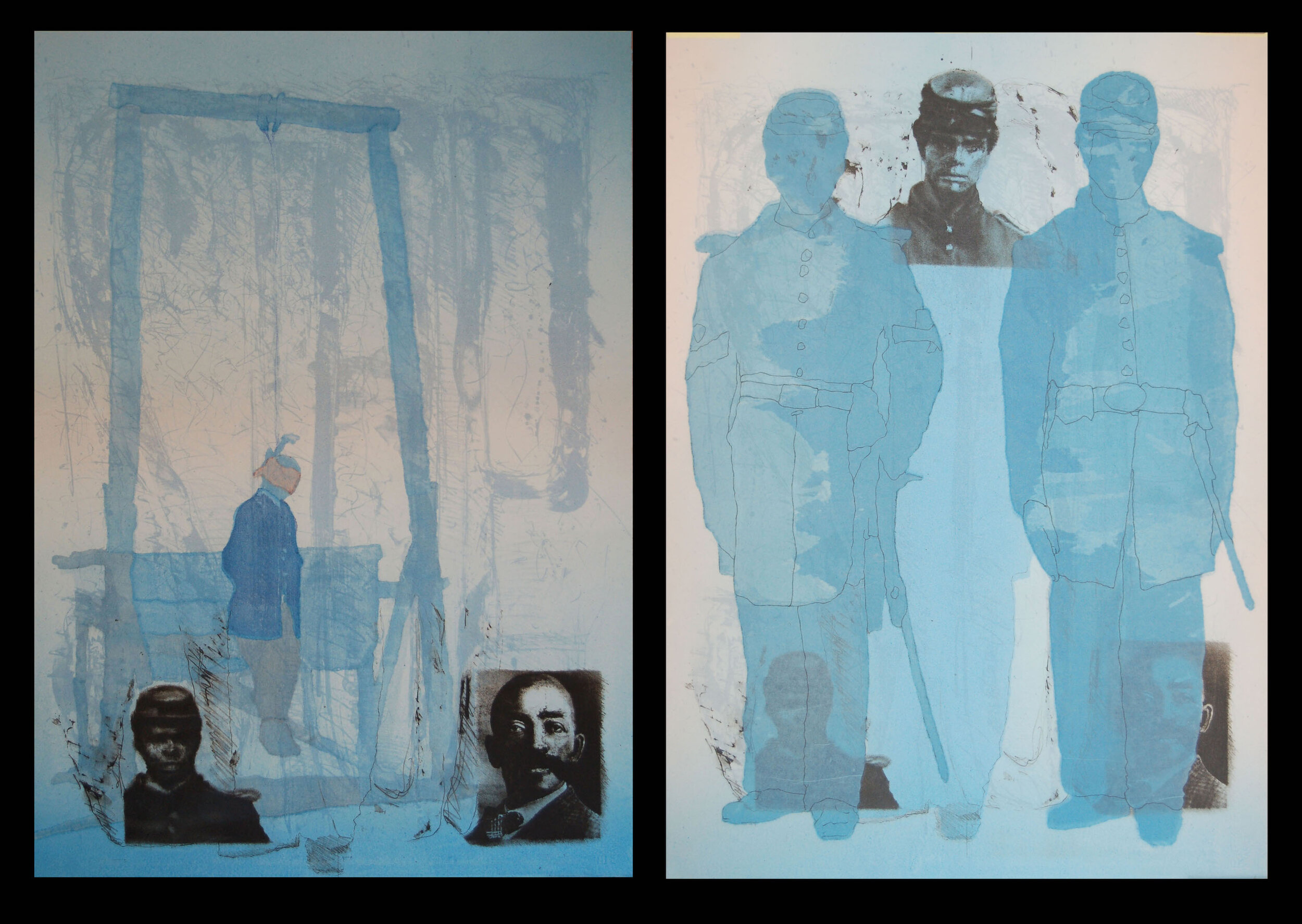
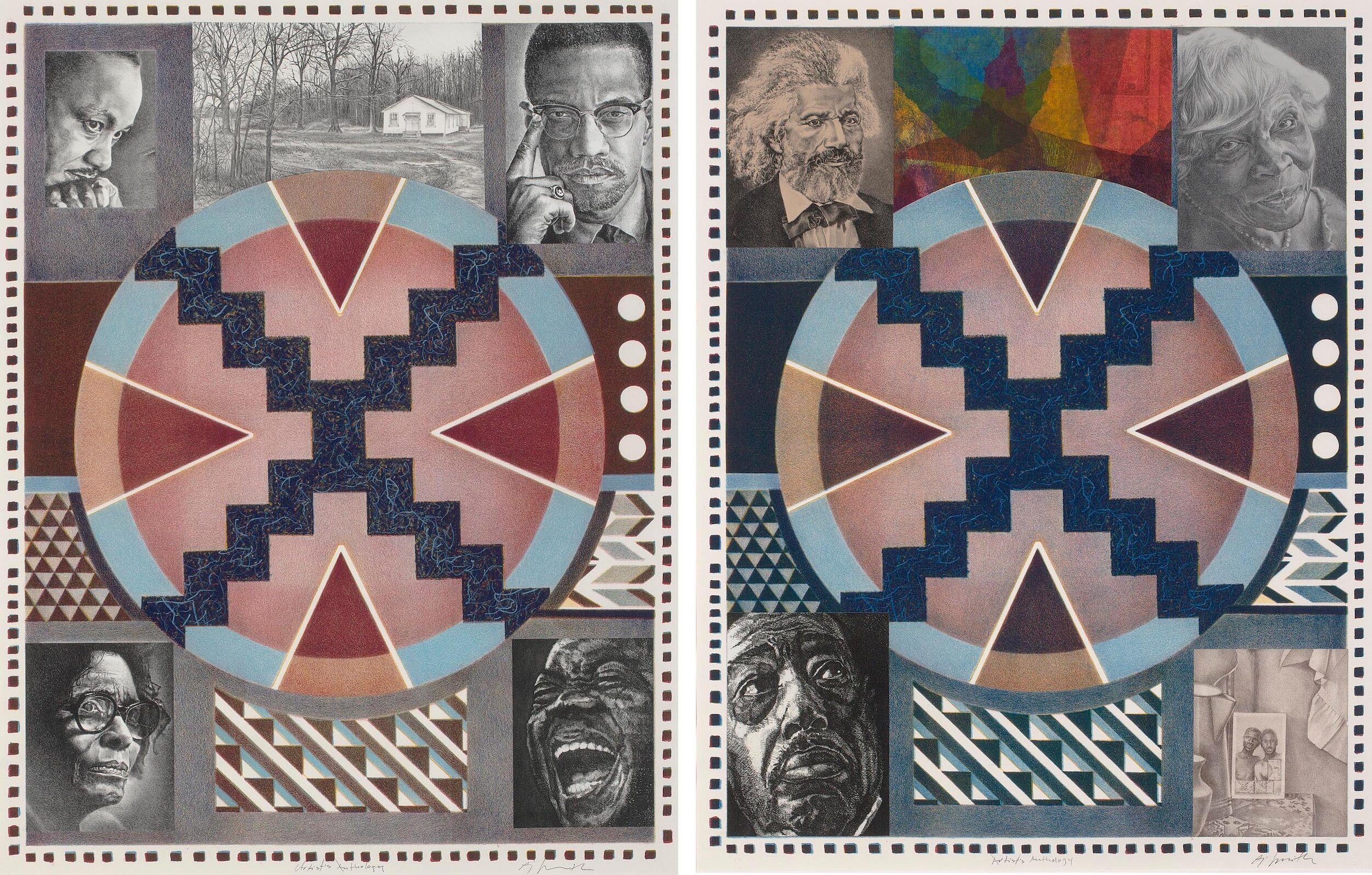
AAS: You have been in many exhibitions including the Delta Exhibition. How important is the Delta and exhibitions in general to artists and the public?
AjS: I will share with your readers something several artists have said to me: “the artwork is not complete until its message is received by others.” I depend on the comments of others for inspiration – it is this that helps me to continue to do what I do. I am grateful to have my work shown in well-respected venues like the Arkansas Arts Center. The Arts Center has honored me with two solo exhibitions, inclusion in several group exhibitions, and Delta jurors have accepted my entries in several exhibitions. The Arts Center has gained international recognition – artists of any stage in their career would be proud to have work shown there and represented in the Arts Center’s Foundation Permanent Collection.

